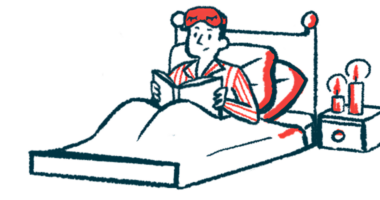Better sleep linked to quality of life, mental health in children with MS
Boosting sleep quality, exercise may help improve well-being of pediatric patients

In children with pediatric-onset multiple sclerosis (POMS), poor sleep quality is linked to fatigue, depression, and worse quality of life, a study has found.
While no significant differences in sleep measures were identified between children and adolescents with MS compared with those without the neurodegenerative condition, sleep can have different effects on measures of quality of life and physical activity.
For example, better sleep quality was linked to less fatigue and depression and improved mental health in young people with MS but not in children who did not have the disease. In addition, longer periods of inactivity during the day were linked with greater sleep efficiency and more time awake after falling asleep in POMS patients, but not in the control group.
These findings suggest that in children and adolescents diagnosed with MS “sleep and sedentary time may be important behavioural targets for intervention due to their strong relationship with mental health outcomes,” researchers wrote.
The study, “Sleep, physical activity, and psychological outcomes in children and adolescents with pediatric onset multiple sclerosis,” was published in the journal Multiple Sclerosis and Related Disorders.
MS typically appears in adulthood
MS usually appears in adulthood, mostly in patients between the ages of 20 and 40. However, the disorder may develop at other ages, including in children and adolescents, who are said to have a disease type known as pediatric-onset MS.
Sleep problems are a common symptom of MS, affecting about half of the people living with the disease. However, less is known about how sleep affects young patients and their mental health and fatigue levels.
To find out, researchers in Canada examined data from 25 POMS patients followed at their hospital and compared them with a control group of an equal number of children and adolescents without the disease. The groups were fairly similar, but the patients had a higher body mass index (a measure of body fat) than the controls.
Participants were between 10 and 18 years old, with a mean age of 16-17 years. All were asked to keep a sleep diary and complete a number of questionnaires to assess their sleep. They also wore wearable sensors that monitored their physical activity and sleep for 10 days.
Sleep and sedentary time may be important behavioural targets for intervention due to their strong relationship with mental health outcomes.
No differences found in sleep quality between the 2 groups
In general, results showed no differences between controls and POMS patients in their sleep quality, including total sleep duration (mean 7.3 vs. 7.4 hours), sleep efficiency (88% vs. 87%), time awake after falling asleep (36 minutes vs. 37 minutes), and number of night awakenings (mean 32 vs. 36).
Control participants went to bed about one hour later than patients (by 11:45 pm vs. 10:24 pm), but the wake up time was similar for both groups (8:24 am for controls and 8:07 am for POMS patients).
Similar scores were also seen in both groups in subjective measures of sleep, including sleepiness, sleep habits, sleep disturbance, and sleep-related breathing disorders.
The amount of light exercise and moderate and vigorous exercise was not significantly different between the two groups, nor was the time spent sedentary. However, the groups differed in the relationships between these measures and sleep and quality of life.
For example, while more hours of sleep were significantly associated with less sedentary time in both groups, light physical activity was associated with a quicker sleep onset only in the MS patients.
Additionally, more sedentary time was linked to greater sleep efficiency, fewer night awakenings, and less awake time after falling asleep in the POMS group, but these associations were not observed in the control group.
“The reason for this finding is unknown but could be explained by another factor — shortened duration of sleep at night in the POMS group, which was associated with greater time spent sedentary,” the researchers wrote. “Children may have felt less energetic during the day due to reduced sleep duration overall and chronically, and that may have associated with greater sleep efficiency.”
More time awake after falling asleep linked to depression in children with MS
Finally, the data showed distinct associations between quality-of-life measures and sleep in both groups. Specifically, children with MS who spent more time awake after falling asleep had more severe depression and fatigue, and worse quality of life, but this was not observed in the control group.
“The results of our study shed new light on the relationships between sleep, sedentary activity, and their differential associations with mental health outcomes in children and adolescents with POMS,” the researchers wrote.
“Interventions that target multiple sleep, sedentary and physical activity behaviors at the same time through time reallocation (e.g., early time to sleep) or exercise training paradigms may be necessary to elicit meaningful changes in depression, fatigue, and quality of life in children and adolescents with POMS,” they concluded.








